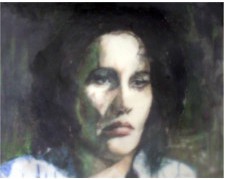The medieval church initially condemns belief in witches as a pagan superstition, but folk beliefs refuse to die. Local folk practice often mixes chants, incantations, and prayers to the saints to ward off storms, protect cattle, or ensure a good harvest. Bonfires on Midsummer's Eve are intended to deflect natural catastrophes or the influence of fairies, ghosts, and witches. The punishment for evil witchcraft is death, but there are few prosecutions because of the Law of Talion, which stipulates that if the accused witch is not found guilty, the accuser will pay the penalty of death. The difficulty of proving witchcraft is sufficient to discourage frivolous accusations. In the 1230’s, however, Inquisitors, who accuse on behalf of the Church rather than as individuals and are thus free of the restrictions of the Law of Talion, link heresy to magic. Before 1252, there is only about one prosecution per year. Then Inquisitors, authorized by Pope Innocent IV, begin to use torture to interrogate heretic magicians. When a suspected witch is reported to the Inquisitors, the individual is interrogated. If no confession is forthcoming, torture is employed, and the accused starts to confess to almost anything, and to accuse other “members” of their “sabbat” (coven).
From 1375 -1435 there is a marked increase in prosecutions, and treatises on witchcraft begin to appear, possibly in answer to the upheavals of the era - the Black Death (1347), the Hundred Years' War (1337-1453), the Little Ice Age (~1500-1700), and the Protestant Reformation (1517) - and these folk superstitions percolate up into Church leadership. Still, as late as 1484, local German church officials are reluctant to participate in the Inquisition, and one even expels Dominican priest Heinrich Kramer from his diocese in Innsbruck for making false accusations. In his influential book Malleus Maleficarum, published in 1487,Kramer expresses his beliefs that witchcraft is responsible for bad weather and that women are inherently susceptible to Satanic seduction because of their raging libido.

Anna Goeldin
1500-1700 is the Golden Age for witch trials. By 1500 the concept of witches is well defined and widely accepted, being written about by recognized intellectual authorities of the age (including English king James I). Any misfortune which occurs, such a barn burning down, or the death of a child, or childlessness itself, can be ascribed to dark magic, and anyone who has a grudge against the victim of the misfortune is under suspicion. As always, the most vulnerable are most suspect, and the most vulnerable tend to be older women dependent upon the charity of others, most likely because of the death of a husband. If one spurns the advances of a beggar and returns home to find one's barn burnt down, the connection is clear. The fact that many of these women are emotionally fragile and sometimes confess merely for the attention only reinforces the community’s fears. Women are considered to be intellectually and morally inferior, and on that account bitter. Witches are also associated with a hunger for the flesh of infants, having animal familiars who aid in their fiendish plans, a special mark on their bodies that signifies their pact with Satan, and membership in a “synagogue” or “sabbat” of witches who participate in sexual orgies with demonic spirits.
The last witch executed in Europe is Anna Goeldin, decapitated on 13 June 1782 in Zurich after she confesses, under torture, to a pact with Satan. Her execution is described in the press as judicial murder.
~~~~~~~~

